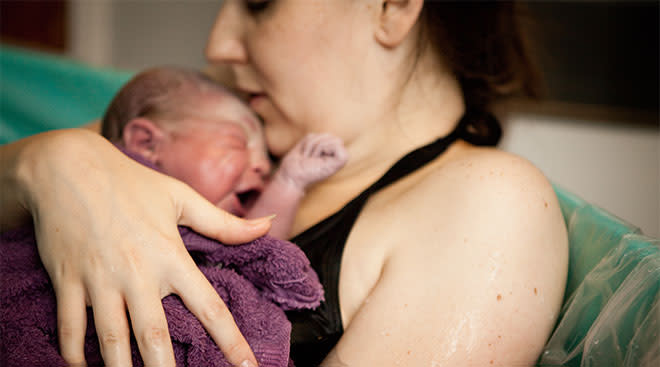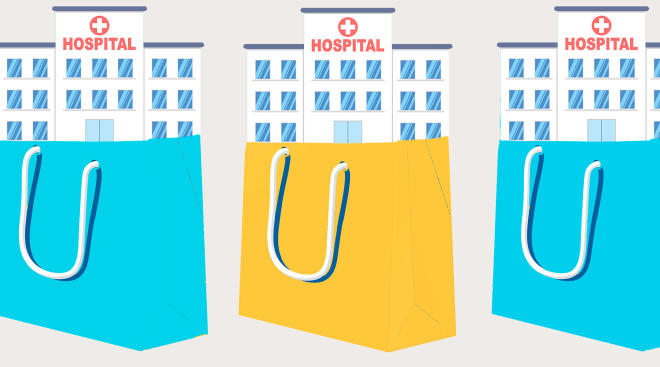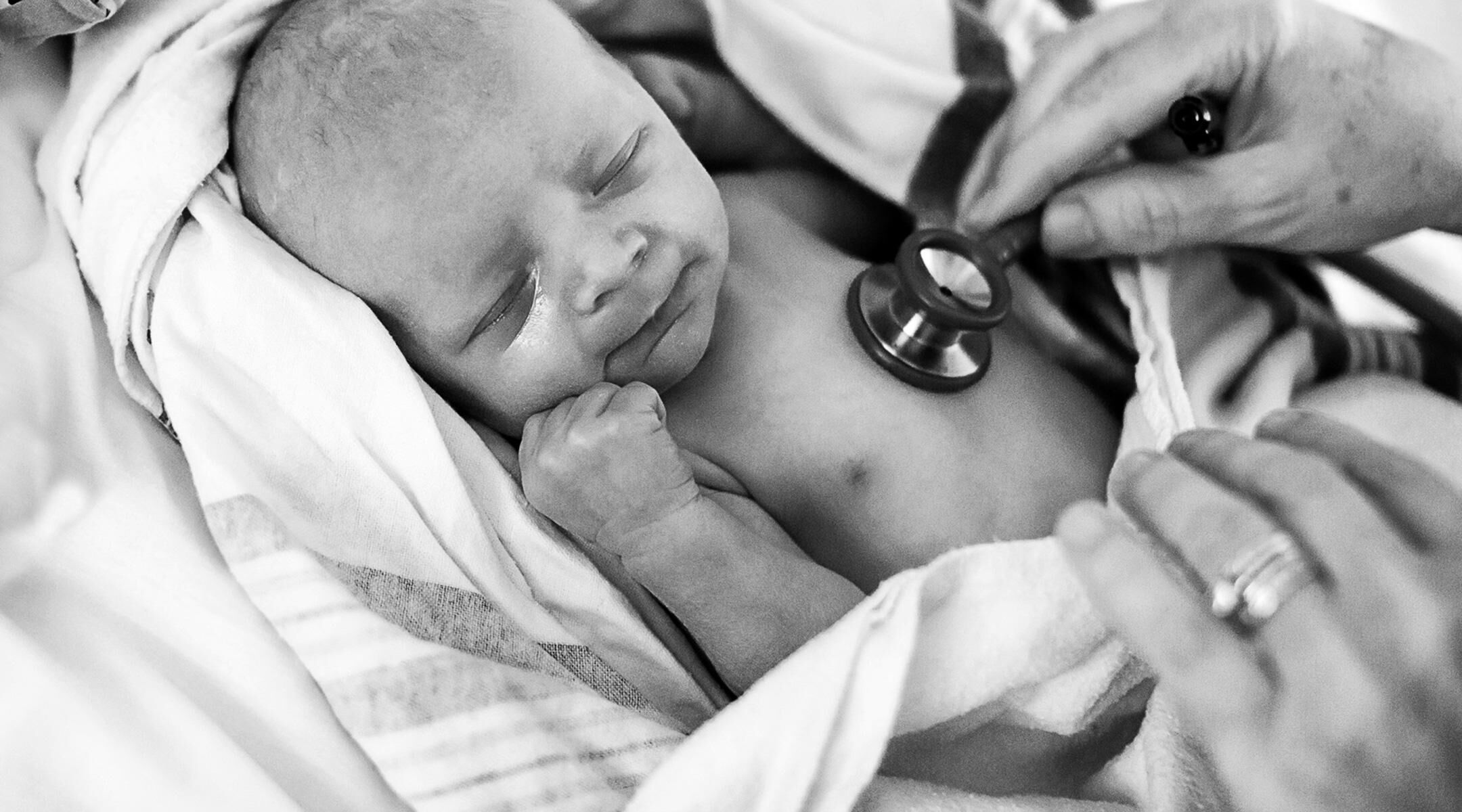The Benefits of Delayed Cord Clamping—and Why You Should Consider It
When the umbilical cord is clamped, baby officially begins life outside of the womb. But while it may not seem like a few seconds makes a difference, the ideal timing has been debated over the years. Before the mid-1950s, it was common practice to clamp baby’s umbilical cord within 15 to 20 seconds after delivery, according to the American College of Obstetricians and Gynecologists (ACOG). But more recently, several large studies were published showing there could be significant benefits to waiting longer. Professional organizations took note and changed their recommendations. Today, "it’s standard practice for midwives and ob-gyns to perform delayed cord clamping at birth,” says Maris K. Toland, MD, an ob-gyn at Dartmouth Hitchcock Clinics Specialty Care in Bedford, New Hampshire. Read on to learn about the benefits of delayed cord clamping and more.
Delayed cord clamping typically refers to the practice of waiting at least 30 to 60 seconds after birth before stopping the blood flow between baby and the placenta, says Szilvia Nagy, MD, director of labor and delivery at NewYork-Presbyterian Lower Manhattan Hospital in New York City. This is the timing recommended by ACOG. Other organizations, however, recommend waiting longer. The majority of providers in the US practice delayed cord clamping, according to research. Still, it’s "a good idea to talk with your OB provider about what their group or hospital typically does” before you’re due to deliver, says Toland.
When baby’s born vaginally, they’re typically placed directly on their parent’s chest with the umbilical cord still attached, says Toland. “Unless the infant shows any signs of distress, the delivering provider will wait 45 to 60 seconds, or longer, before clamping and cutting the cord,” she says. “In my practice, we offer to have a member of the delivering family cut the cord if they wish to.”
Delayed cord clamping is standard practice with c-sections too, says Toland: “As long as bleeding is stable and the infant is doing well, the same process for delayed cord clamping will take place.” However, the process is a bit different because the surgeon has to stay sterile to stitch Mom back up—this means a nurse typically hands baby to the parent, and family members aren’t allowed to cut the cord. In the case of an emergency c-section due to fetal distress, it may not be safe to wait before clamping the cord, adds Toland.
You might wonder how delayed cord clamping differs from a lotus birth, which is the practice of leaving baby’s umbilical cord attached until it falls off by itself.
Delayed cord clamping involves waiting up to around five minutes after birth to clamp a baby’s umbilical cord, according to ACOG. In a lotus birth, the placenta and umbilical cord remain connected until the cord dries out and falls off on its own, usually after about five to 15 days.
While delayed cord clamping is commonly practiced, lotus birth isn’t—and practitioners generally advise against it: There’s very little research on it, and it could lead to infection, according to the University of Michigan C.S. Mott Children’s Hospital.
A few extra seconds of blood flow after delivery may make a significant difference in the amount of iron that’s transferred from placenta to baby. Research suggests that delayed cord clamping may improve a baby’s iron stores for up to six months after birth—which is around the same time you’ll likely introduce iron-rich solid foods to their diet.
“Iron is necessary to make hemoglobin, which carries oxygen in red blood cells to all parts of the body,” explains Nagy. Delayed cord clamping can help reduce the risk of iron-deficiency anemia during the first year of life. Low iron stores during infancy may impact a baby’s oxygen uptake and impair their cognitive, motor and behavioral development, research says. “Babies with an iron deficiency may be less physically active and may develop more slowly,” says Nagy.
Delayed cord clamping could also increase the immunoglobulins and stem cells baby receives from you through the placenta, says ACOG. “These molecules may be helpful after cellular injury, inflammation and organ dysfunction,” explains Toland.
For preterm babies, delayed cord clamping is especially helpful, experts say. It “lowers the incidence of brain hemorrhage and an intestinal disease called necrotizing enterocolitis,” says Nagy. Research suggests the practice reduces the odds that babies will need a blood transfusion. A 2023 review of 48 studies found that delayed cord clamping reduces the risk of death before preterm babies leave the hospital.
Recommendations for delayed cord clamping vary between professional organizations. The American Academy of Pediatrics (AAP) and ACOG both recommend waiting 30 to 60 seconds after birth to clamp the cord. The World Health Organization suggests waiting at least one minute, the Royal College of Obstetricians and Gynaecologists in the UK advises a minimum of two minutes and the American College of Nurse-Midwives recommends a two-to-five-minute delay.
Timing for cord clamping depends on the individual provider, says Toland. While most ob-gyns follow ACOG guidelines, “in my experience, nurse midwives do wait longer,” says Toland. If you had an uncomplicated pregnancy and delivery, “it’s safe and appropriate to wait longer than 60 seconds,” she says.
In healthy pregnancies and uncomplicated deliveries, the risks of delayed cord clamping are low, according to ACOG. The practice appears to slightly increase the chances that baby will develop jaundice, possibly because too much blood is transferred from Mom, say both Toland and Nagy. In jaundice, high levels of bilirubin, a substance found in red blood cells, causes baby’s skin to appear yellow. The condition is usually treated with light therapy, says Toland.
Because preterm babies may need oxygen ventilation or resuscitation after delivery, delayed cord clamping is only appropriate in hospitals with a neonatal intensive care unit (NICU), says Nagy.
There are a few instances where delayed cord clamping may not be safe, says Toland, including if:
- Baby doesn’t start breathing or moving on their own soon after delivery
- Mom has certain placental conditions, such as placental abruption, placenta previa or fetal growth restriction
- Severe bleeding, including hemorrhage, in Mom, which requires prompt treatment
If you’re choosing to bank baby’s cord blood, this can affect delayed cord clamping. “In order to collect enough blood to bank, there needs to be active blood flow from the placenta. The longer you wait, the less blood flow there is,” says Toland. “When I’m collecting cord blood for banking, I will usually only delay clamping for about 60 seconds to ensure there’s enough blood for the collection kit.”
Unless your doctor suggests that baby can benefit from cord blood banking, “the benefits to the infant of transfusion of additional blood volume at birth likely exceed the benefits of banking that volume for possible future use,” says Nagy.
For most deliveries, delayed cord clamping is safe and effective—and it’s the standard of care. That means you can leave it up to your practitioner and focus on the most fulfilling part of birth: meeting and bonding with your newborn.
Please note: The Bump and the materials and information it contains are not intended to, and do not constitute, medical or other health advice or diagnosis and should not be used as such. You should always consult with a qualified physician or health professional about your specific circumstances.
Plus, more from The Bump:
Szilvia Nagy, MD, FACOG, is the director of labor and delivery at NewYork-Presbyterian Lower Manhattan Hospital in New York City. She earned her medical degree from the University of Cincinnati College of Medicine.
Maris K. Toland, MD, is an ob-gyn at Dartmouth Hitchcock Clinics Specialty Care in Bedford, New Hampshire. She earned her medical degree from Tufts University School of Medicine in Boston.
American College of Obstetricians and Gynecologists, Delayed Umbilical Cord Clamping After Birth, December 2020
Cochrane Database of Systematic Reviews, Effect of Timing of Umbilical Cord Clamping of Term Infants on Maternal and Neonatal Outcomes, July 2013
Journal of Neonatal-Perinatal Medicine, Umbilical Cord Clamping Practices of U.S. Obstetricians, April 2018
University of Michigan C.S. Mott Children’s Hospital, Lotus Birth/Umbilical Non-Severance: What to Expect, June 2016
World Health Organization, Guideline: Delayed Umbilical Cord Clamping for Improved Maternal and Infant Health and Nutrition Outcomes, 2014
National Heart, Lung, and Blood Institute, Iron-Deficiency Anemia, March 2022
JAMA Pediatrics, Effect of Delayed Cord Clamping on Neurodevelopment at 4 Years of Age: A Randomized Clinical Trial, July 2015
World Health Organization, Effect of Timing of Umbilical Cord Clamping and Other Strategies to Influence Placental Transfusion at Preterm Birth on Maternal and Infant Outcomes
The Lancet, Deferred Cord Clamping, Cord Milking, and Immediate Cord Clamping at Preterm Birth: A Systematic Review and Individual Participant Data Meta-Analysis, November 2023
World Health Organization, Optimal Timing of Cord Clamping for the Prevention of Iron Deficiency Anaemia in Infants, August 2023
Mayo Clinic, Infant Jaundice, January 2022
Learn how we ensure the accuracy of our content through our editorial and medical review process.
Navigate forward to interact with the calendar and select a date. Press the question mark key to get the keyboard shortcuts for changing dates.




















































